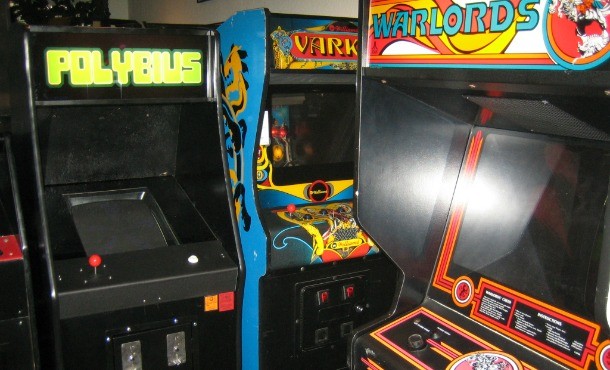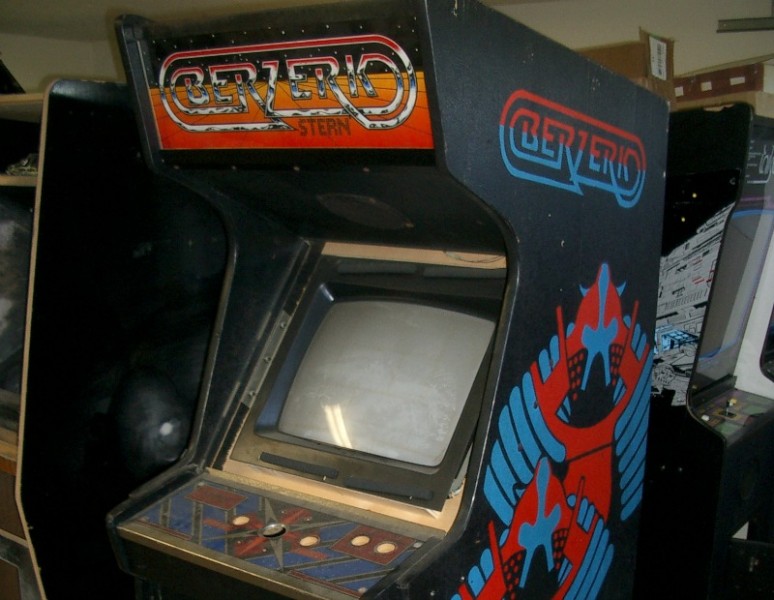Please support Game Informer. Print magazine subscriptions are less than $2 per issue
Five Gaming Urban Legends That Should Be Debunked

Atari's legendary stash of buried E.T. Atari cartridges was a true story that eventually faded into the gaming landscape and became an urban legend. Lightbox Interactive and Fuel Industries has recently exhumed the New Mexican landfill containing these cartridges, but there are still plenty of urban legends for gamers to wonder about. We explore a few urban legends that should be excavated next.

Does A Ghastly Version Of Pokémon Black Really Exist?
Back in 2011, Nintendo released Pokémon Black & White, but several years before that title hit the market, rumors began to circulate about a mysterious Pokémon Black Version that was found at a flea market. This version of the game was essentially a rip of the original Pokémon Red. A post on Tiny Cartridge explains that the game starts out much like Pokémon Red but in addition to being able to select Bulbasaur, Charmander, and Squirtle as a starter Pokémon, players also have access to a Pokémon called Ghost based on the ghost sprite players encounter in Lavender Tower. This Pokémon had a move called curse that instantly killed most Pokémon in a screaming flash of black. After players beat the Elite Four, the game would cut to years later as their hero wandered an empty Earth as an old man and eventually interacted with the ghosts of all the Pokémon they had killed over the years before. The hero then died in a fight with their Ghost Pokémon. Is this Pokémon Black Version a real gaming hack created by some programmer who wanted to creep out Pokémon fans? Or is it just a good campfire tale? We're waiting for someone to get to the bottom of this mystery.

Was The Government Spying On Gamers In The Early '80s?
In the early '80s it was common for new games to just appear in pizza parlors and bars without any advertising. People didn't know what was going to be the next big arcade fad, but games like Pac-Man and Donkey Kong would suddenly appear on the arcade scene and their popularity would slowly spread through word of mouth. So when several cabinets of a puzzle/shooter called Polybius suddenly appeared across the suburbs of Portland, Oregon no one really thought much about it. For a short while, the game was insanely popular, drawing huge lines and causing fights among the patrons waiting for their turn. Rumor has it that those who played the game began to experience headaches and even nightmares afterwords. More bizarrely, mysterious men in black were often seen visiting the cabinet locations and collecting some kind of data from the machines. Then one day, as quickly as the machines had appears, they were gone. Is Polybius the result of a short lived government experiment in subliminal messaging? Or is this story just an exaggerated tale of early Tempest test cabinets that gave players vertigo? Interestingly, Polybius is named after the Greek historian who asserted that historians should never report what they cannot verify through interviews with eye witnesses. Maybe someday someone will be able to track down a Polybius player with a credible story.

Did Saddam Hussein Use PS2s To Make Guidance Chips For WMDs?
In the fall of 2000, Sony's PlayStation 2 was one of the hottest toys on the market. Everyone was buying Sony's new console…including Iraq President Saddam Hussein. Shortly after the console's launch, rumors started circulating that Hussein was stockpiling as many as 4,000 PlayStation 2s in the hopes of daisy chaining together the console's processors and designing a massive missile guidance system. Iraq has been on the hunt for weapons of mass destruction for a long time, and a bundle of PS2 chips could theoretically be used to calculate ballistic data for long-range missiles or aid the design of nuclear weapons. World Net Daily claimed to have an unidentified source that confirmed that Hussein was indeed stockpiling the consoles, but no one was ever able to confirm what he was doing with them or if Iraq had the capabilities to actually build a super computer with thousands of Sony's chips. Did Iraq come close to building nuclear weapons using gaming hardware, or did Hussein just have a lot of gamers on his Christmas list? The answers might be buried in a confidential folder in some government file cabinet.

Is A Level Of Super Mario Galaxy 2 Haunted By Ghosts?
Super Mario Galaxy 2 was one of the best Wii games on the market, but one of its levels features a strange oddity. Near the beginning of the Shiverburn Galaxy level, three shadowy figures can be seen at the top of one of the background's cliffs. After the figures were discovered, some enterprising gamers hacked into the Super Mario Galaxy 2's code and discovered that the figures were separate textures from the rest of the environment. Furthermore, their file was labeled HellValleySkyTree. A level called Hell Valley does not exist in the game. Is it possible that the figures belong to a level from the game that was removed before the game shipped and some disgruntled programmer placed the figures inside the game in protest? Is it possible that Shiverburn Galaxy was once called Hell Valley, and that the figures were actually suppose to be trees and were accidentally left in the game when the level was redesigned? Or is it possible that these figures were actually left in the game intentionally, and are alien watchers who are a foreshadow of a game project that Nintendo hasn't announced yet? Some artist over at Nintendo probably knows the truth.

Did An '80s Arcade Cabinet Kill Two Teenagers?
Created by Stern Electronics of Chicago in 1980, Berzerk became a fairly popular multi-directional shooter where players shot down evil robotic stick men while running from a bouncing yellow smiley face. The game was one of the first arcade games to utilize a voice synthesizer to recreate several English phrases such as "Intruder alert! Intruder alert!" and "The humanoid must not escape." These phrases would taunt players while they played the game, but this kind of behavior was unusual and would often scare unsuspecting players. The game developed a terrifying legend that took a turn for the macabre in January of 1981 when 18-year-old Jeff Dailey died of a heart attack after setting the high score on a cabinet. A year later, a 19-year-old Peter Burkowski also passed away from a heart attack after playing the game at Friar Tuck's Arcade in Calumet City, Illinois. This legend has some legitimacy as the creator of Berzerk, Alan McNeil, talked about one of the deaths in an issue of Retro Gamer. McNeil mentions that the gamer in question was an obese fellow who had run up a set of stairs before playing the game, and the strain of exercise might have been enough to send his weakened heart over the edge. Are these claims of Berzerk's lethality just exaggerated tales about a gamer in poor health? Or is it possible that an old arcade cabinet has been shocking people to death for decades? Who's willing to do the research to find out?
Do you think any of these legends are real? Which do you think are fake? Leave your ideas in the comments below.










